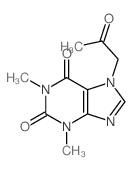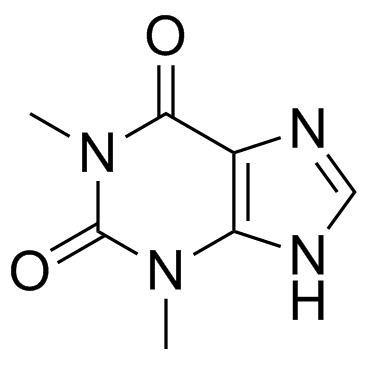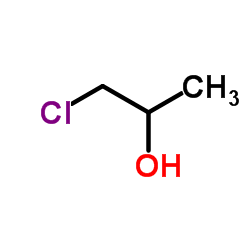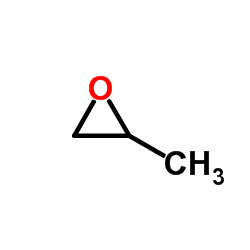Proxyphylline
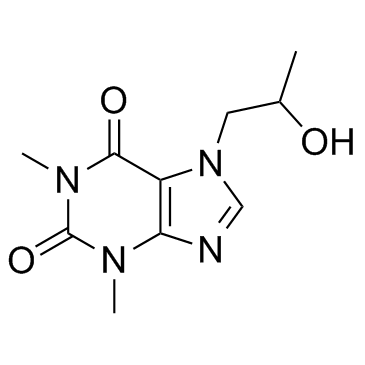
Proxyphylline structure
|
Common Name | Proxyphylline | ||
|---|---|---|---|---|
| CAS Number | 603-00-9 | Molecular Weight | 238.24300 | |
| Density | 1.46 g/cm3 | Boiling Point | 487.2ºC | |
| Molecular Formula | C10H14N4O3 | Melting Point | 134-136ºC | |
| MSDS | N/A | Flash Point | 248.5ºC | |
| Symbol |

GHS07 |
Signal Word | Warning | |
Use of ProxyphyllineProxyphylline is a methylxanthine derivative clinical used as cardiac stimulant, vasodilator and bronchodilator. |
| Name | 7-(β-Hydroxypropyl)theophylline |
|---|---|
| Synonym | More Synonyms |
| Description | Proxyphylline is a methylxanthine derivative clinical used as cardiac stimulant, vasodilator and bronchodilator. |
|---|---|
| Related Catalog | |
| In Vitro | Proxyphylline has shown vasodilatory and cardiac stimulatory effects. Proxyphylline produces an increase in the coronary flow associated with a definite positive inotropic effect[1]. Proxyphylline inhibits tracheal PDE-activity and half-maximum relaxation of tracheal smooth muscle is obtained with 100 μg/mL proxyphylline[2] |
| In Vivo | In a double-blind cross-over study, proxyphylline exhibits bronchodilatory effect[3]. Proxyphylline inhibits cAMP and cGMP hydrolysis in human lung tissue. The apparent inhibition constant of proxyphylline is 0.06-0.7 mM at low cAMP concentrations and it is 1.0 mM at high cAMP concentrations[3]. |
| References |
| Density | 1.46 g/cm3 |
|---|---|
| Boiling Point | 487.2ºC |
| Melting Point | 134-136ºC |
| Molecular Formula | C10H14N4O3 |
| Molecular Weight | 238.24300 |
| Flash Point | 248.5ºC |
| Exact Mass | 238.10700 |
| PSA | 82.05000 |
| Index of Refraction | 1.664 |
| InChIKey | KYHQZNGJUGFTGR-UHFFFAOYSA-N |
| SMILES | CC(O)Cn1cnc2c1c(=O)n(C)c(=O)n2C |
| Storage condition | Refrigerator |
CHEMICAL IDENTIFICATION
HEALTH HAZARD DATAACUTE TOXICITY DATA
|
|
~% 
Proxyphylline CAS#:603-00-9 |
| Literature: Bulletin de la Societe Chimique de France, , p. 1773,1775 |
|
~% 
Proxyphylline CAS#:603-00-9 |
| Literature: Journal of Medicinal Chemistry, , vol. 42, # 14 p. 2527 - 2534 |
|
~% 
Proxyphylline CAS#:603-00-9 |
| Literature: US2715125 , ; |
|
~% 
Proxyphylline CAS#:603-00-9 |
| Literature: US2715125 , ; |
|
~% 
Proxyphylline CAS#:603-00-9 |
| Literature: Archiv der Pharmazie (Weinheim, Germany), , vol. 292, p. 234,236,237 |
|
~% 
Proxyphylline CAS#:603-00-9 |
| Literature: Bulletin de la Societe Chimique de France, , p. 1773,1775 |
| HS Code | 2933990090 |
|---|---|
| Summary | 2933990090. heterocyclic compounds with nitrogen hetero-atom(s) only. VAT:17.0%. Tax rebate rate:13.0%. . MFN tariff:6.5%. General tariff:20.0% |
|
Endocrine regulation of airway contractility is overlooked.
J. Endocrinol. 222(2) , R61-73, (2014) Asthma is a prevalent respiratory disorder triggered by a variety of inhaled environmental factors, such as allergens, viruses, and pollutants. Asthma is characterized by an elevated activation of the... |
|
|
High-performance liquid chromatographic determination of (R)-and (S)-proxyphylline in human plasma.
J. Chromatogr. A. 491(2) , 355-66, (1989) A reversed-phase high-performance liquid chromatographic assay has been developed for determination of (R)-(--)-and (S)-(+)-proxyphylline in human plasma. The procedure is based on liquid-solid extrac... |
|
|
Acute intoxication with theophylline, proxyphylline and diprophylline in a 3-month-old infant after rectal application: pharmacokinetic data under hemoperfusion.
Acta Paediatr. Scand. 79(1) , 112-4, (1990)
|
| MFCD00022833 |
| 7-(2-hydroxypropyl)-1,3-dimethylpurine-2,6-dione |
| (1,3-Dimethyl-7-[2-hydroxypropyl]-2,6-dioxopurine) |
| EINECS 210-028-7 |
| Proxyphylline |
| 7-(2-Hydroxypropyl)theophylline |
